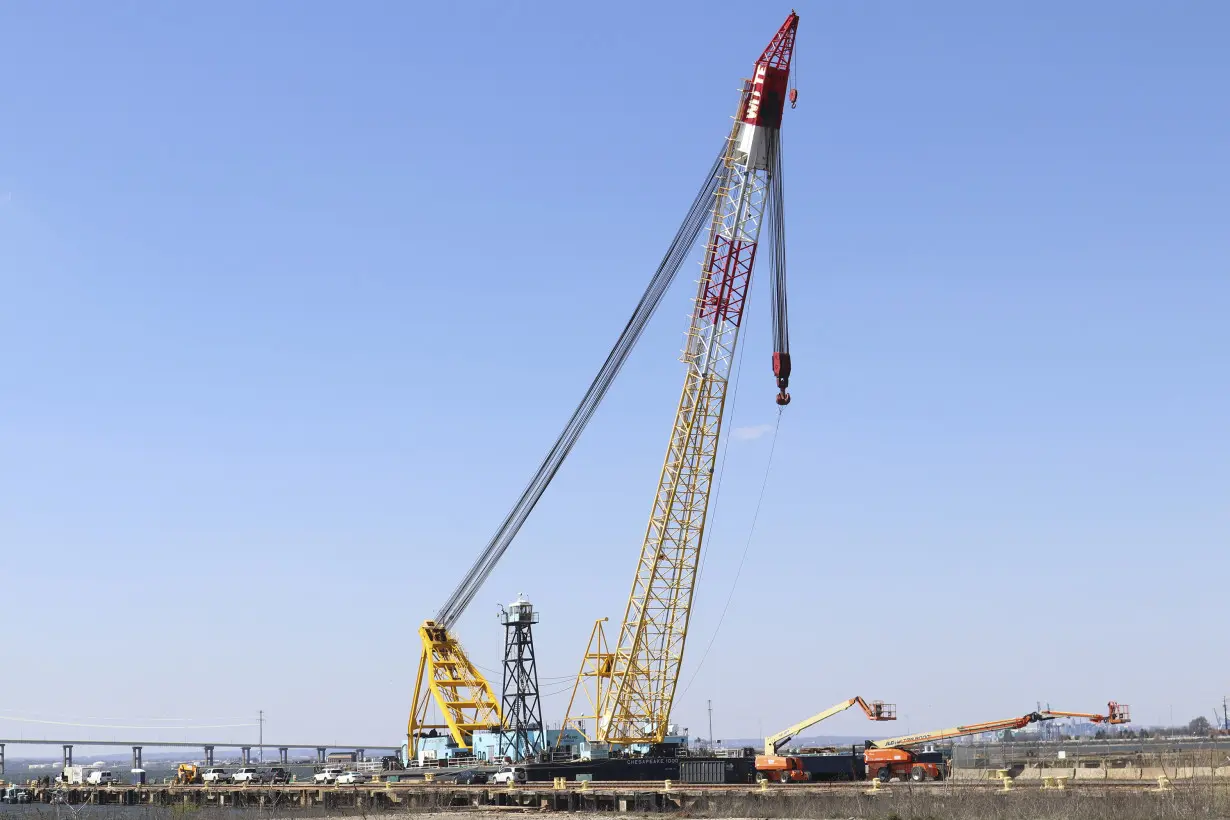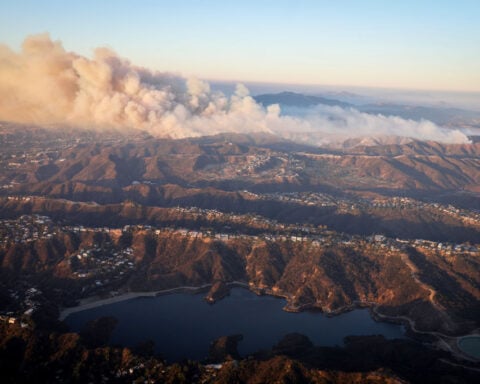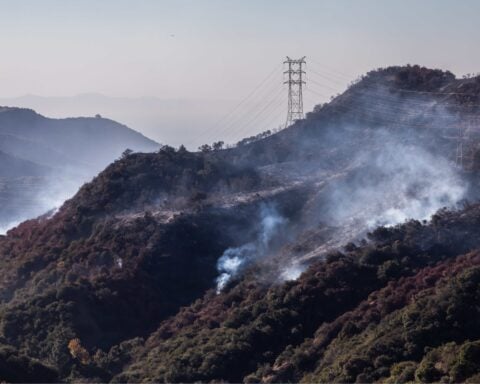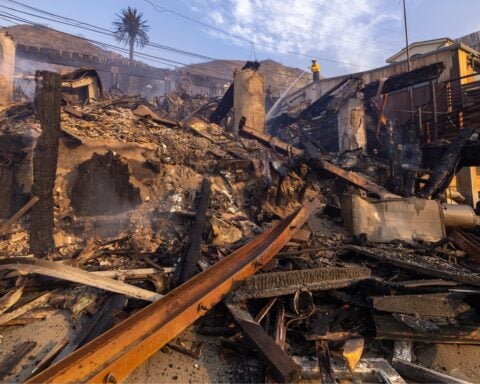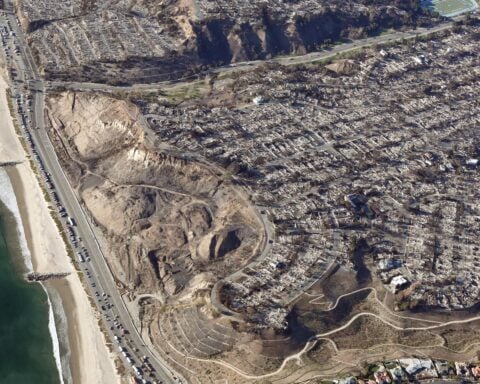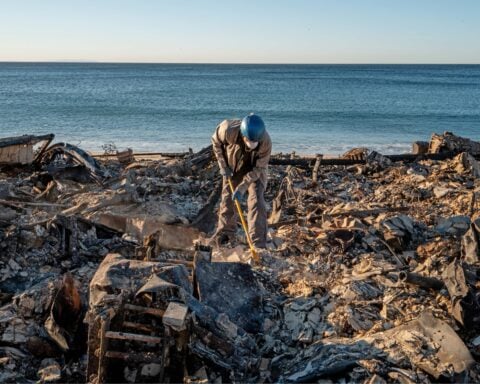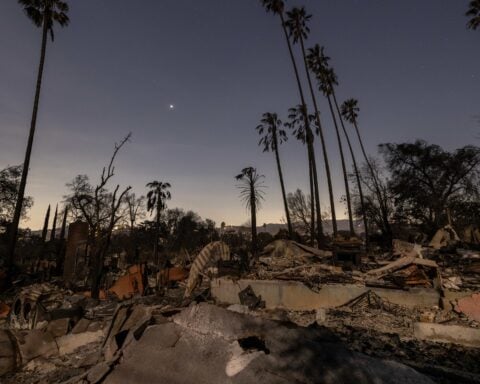These days a floating crane called the Chesapeake 1000 — nicknamed “Chessy” — has the grim task of hauling off shattered steel from last week's fatal bridge collapse in Baltimore.
It has taken on many jobs over the decades. But the crane's most notable operation, until last week, was helping the CIA retrieve part of a sunken Soviet submarine.
In the early 1970s, the crane barge was called the Sun 800 for the number of tons it could lift. It helped to construct a specialized ship that raised a portion of the sub in 1974. Specifically, the crane hoisted into the ship heavy machinery that was vital to the Cold-War heist.
The equipment included a mechanical claw, tons of steel pipe and a heavy duty hydraulic system. The Soviet submarine was roughly 3 miles (5 kilometers) below the surface of the Pacific.
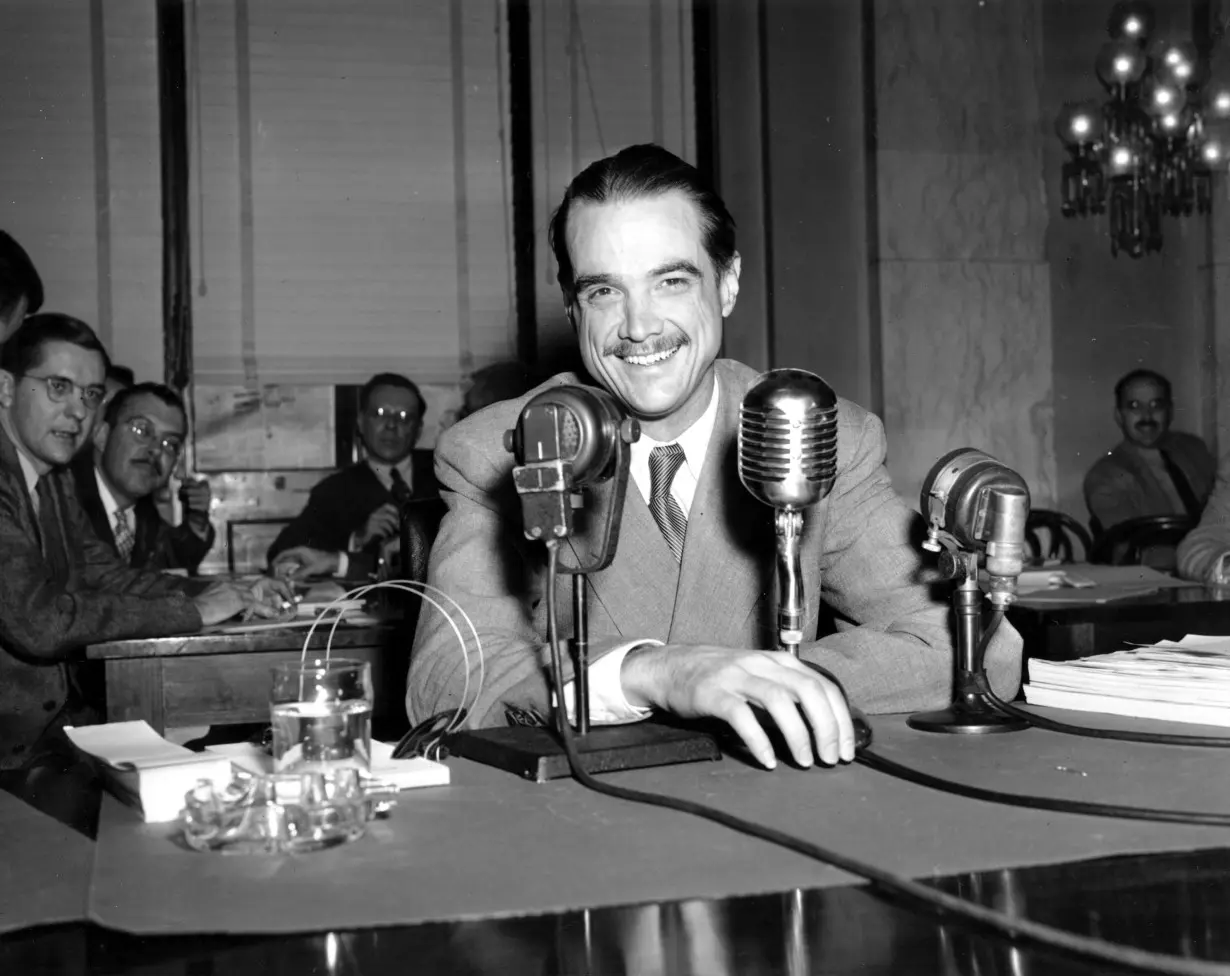
The CIA wrote on its website that the ship “could conduct the entire recovery under water, away from the view of other ships, aircraft or spy satellites.” The specialized ship was called the Hughes Glomar Explorer, named after the billionaire industrialist Howard Hughes.
To save time, a Philadelphia-area shipyard built the vessel's heavy parts on the ground. The floating crane was needed to lift those assembled pieces into the new ship.
“The Sun 800 was built specifically to help us on the construction of the Hughes Glomar Explorer," said Gene Schorsch, who was then chief of hull design for Sun Shipbuilding and Drydock Co.
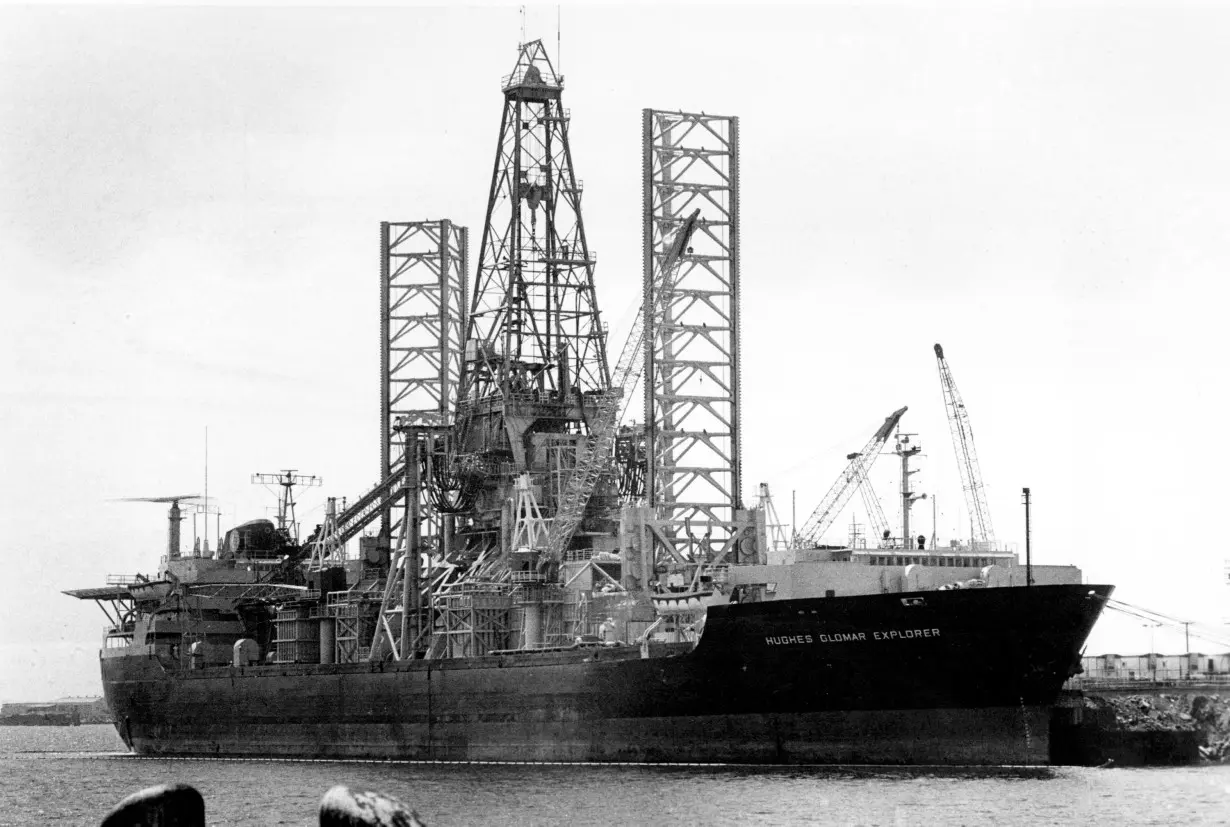
The secret mission was called “Project Azorian.”
News stories in 1975 told of the mission. But Washington didn’t confirm the basic facts until 2010, when the CIA released a partially redacted report that lacked many of the juicy details.
“It's considered one of the most expensive intelligence operations of all time,” said M. Todd Bennett, a history professor at East Carolina University in Greenville, North Carolina, who wrote a 2022 book on the mission. ”And not only that, it’s certainly one of the most inventive or daring intelligence operations in U.S. history."
The sub, K-129, was lost northeast of Hawaii in 1968. After the Soviets abandoned their search, the U.S. found the vessel.
“To discover it, that's one thing,” Bennett said. “But to have the wherewithal to try to devise a way to recover that piece of hardware is really remarkable. It's been compared — and rightly so — to an underwater moonshot.”
The submarine was a potential wellspring of intelligence, from details on Soviet nuclear-weapons capabilities to military codes.
By 1970, the CIA had devised its plan and hatched a cover story for the ship: A commercial deep-sea mining vessel owned by Hughes.
The agency's hope was to retrieve a 132-foot (40-meter) section of the sub, which weighed 1,750 tons.
“While maintaining its position in the ocean currents, the ship had to lower the (claw) by adding 60-foot sections of supporting steel pipe, one at a time,” the CIA wrote.
Another piece of machinery assembled for the ship was a special platform. It was used to keep the claw system steady — and on target — in the ocean currents.
“You want the ship to be able to roll or pitch without affecting that pipe,” Schorsch said.
During the mission, the claw grasped the submarine section. But about a third of the way up it broke, allowing part of the sub's hull to fall away.
Former CIA Director William Colby later wrote that the most valuable aspects of the sub were lost, Bennett said.
The salvage, however, included the bodies of six Soviet sailors, who were given a formal military burial at sea.
A second mission was planned. But journalists broke the story in 1975, led by Seymour Hersh, then writing for The New York Times, and columnist Jack Anderson.
News reports indicated that some manuals may have been recovered, while some of the hull pieces helped the U.S. to refine its estimates of Soviet naval capabilities, Bennett said.
Anderson’s sources told him Project Azorian was too expensive and sapped resources from other intelligence programs, Bennett said.
The submarine also was diesel-powered and generations behind the Soviet's nuclear-powered subs.
“Anderson’s sources — and Anderson — argued that it was really a museum piece, a relic,” Bennett said.
American media outlets were heavily criticized for reporting on the project, which had a “chilling effect” as news outlets became less willing to disclose intelligence secrets, Bennett said.
The professor said the mission itself was a partial success.
“Sadly the ship itself no longer exists — it was scrapped years ago,” Bennett said. “But it was a significant piece of hardware. And this was a really important mission in U.S. intelligence history, in part because it was one of the first major underwater operations that we were aware of."
Meanwhile, the crane that helped build the Hughes Glomar Explorer is now often touted as one of the largest of its kind on the East Coast.
Engineering News-Record, a magazine that covers the construction industry, wrote in 2017 that Donjon Marine Co. Inc., bought the Sun 800 in 1993. The salvage company increased the capacity to 1,000 tons and renamed it the Chesapeake 1000 to reflect what it can haul.
Since then, it's helped to construct bridges and buildings. But few projects have been as urgent as the one in Baltimore. Officials are scrambling to clear shipping channels for one of the East Coast's busiest ports and to erect a new Francis Scott Key Bridge.
“To go out there and see it up close, you realize just how daunting a task this is," Maryland Gov. Wes Moore said Friday after the Chesapeake 1000 arrived at the collapsed span. “You realize how difficult the work is ahead of us.”

 Michigan Gov. Gretchen Whitmer, a potential 2028 candidate, wants to find common ground with Trump
Michigan Gov. Gretchen Whitmer, a potential 2028 candidate, wants to find common ground with Trump
 Biden promised to turn the page on Trump. Now he's being replaced by him
Biden promised to turn the page on Trump. Now he's being replaced by him
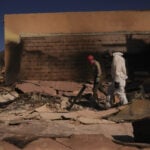 Firefighters prepare for increasing gusts following brief reprieve for LA area
Firefighters prepare for increasing gusts following brief reprieve for LA area
 Nippon Steel wants to work with Trump administration on US Steel deal, Mori tells WSJ
Nippon Steel wants to work with Trump administration on US Steel deal, Mori tells WSJ
 After cable damage, Taiwan to step up surveillance of flag of convenience ships
After cable damage, Taiwan to step up surveillance of flag of convenience ships
 BOJ will raise rates if economy, price conditions continue to improve, Ueda says
BOJ will raise rates if economy, price conditions continue to improve, Ueda says
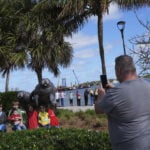 Manatees congregate in warm waters near power plants as US winter storms graze Florida
Manatees congregate in warm waters near power plants as US winter storms graze Florida
 AAPI adults prioritize immigration, but split on mass deportations: AP-NORC/AAPI Data poll
AAPI adults prioritize immigration, but split on mass deportations: AP-NORC/AAPI Data poll
 As Los Angeles burns, Hollywood's Oscar season turns into a pledge drive
As Los Angeles burns, Hollywood's Oscar season turns into a pledge drive
 As fires ravage Los Angeles, Tiger Woods isn't sure what will happen with Riviera tournament
As fires ravage Los Angeles, Tiger Woods isn't sure what will happen with Riviera tournament
 Antetokounmpo gets 50th career triple-double as Bucks win 130-115 to end Kings' 7-game win streak
Antetokounmpo gets 50th career triple-double as Bucks win 130-115 to end Kings' 7-game win streak
